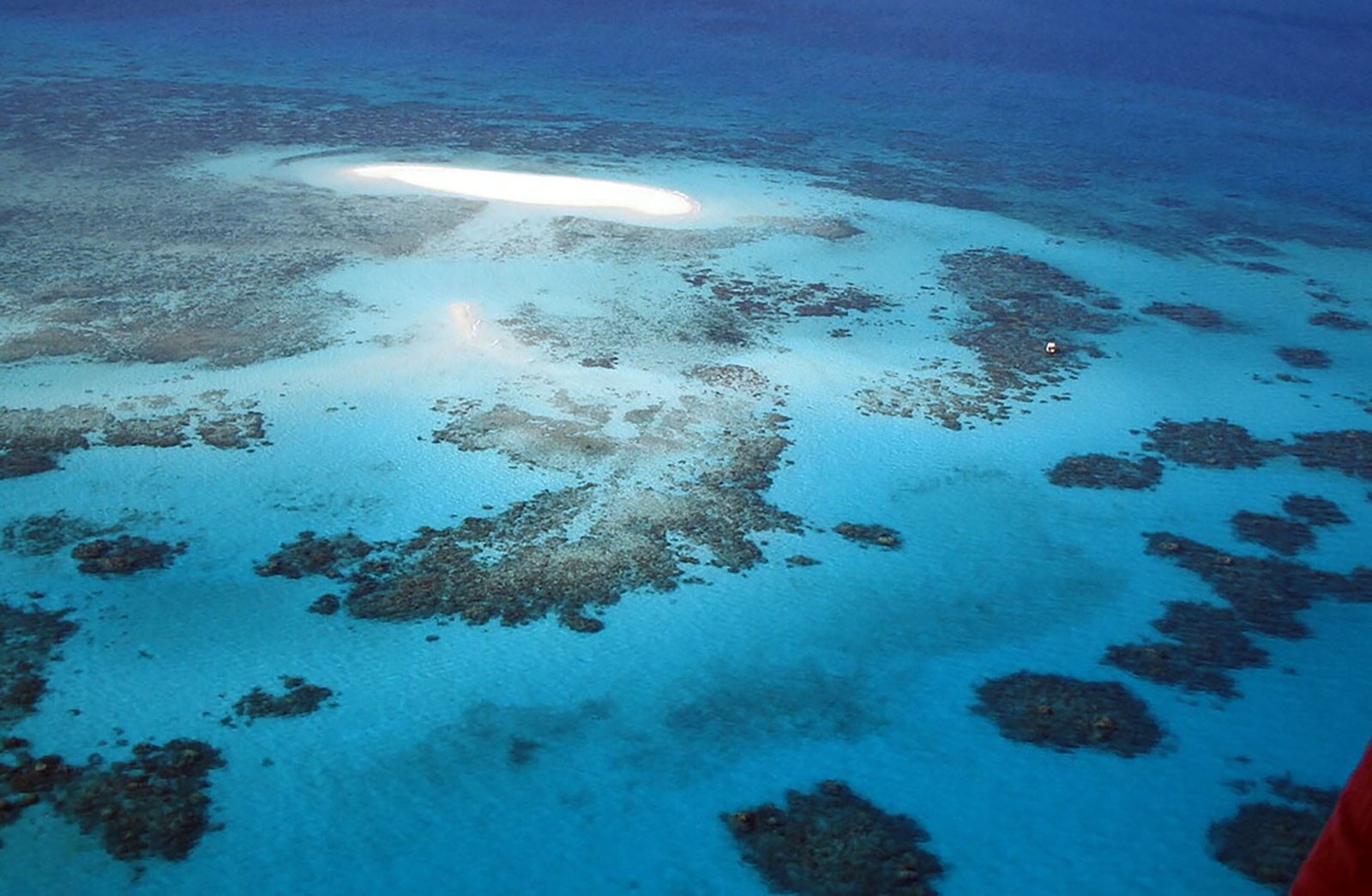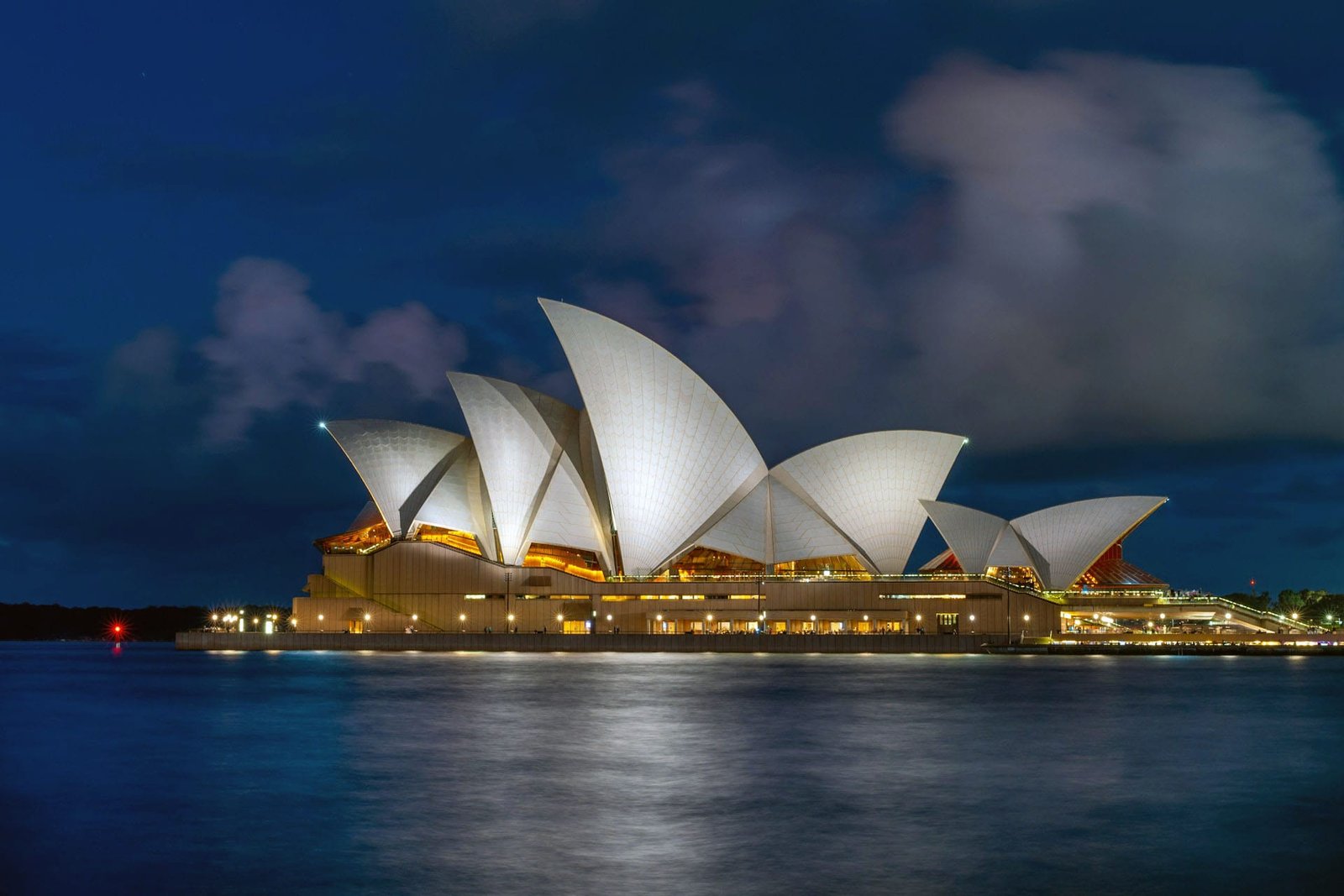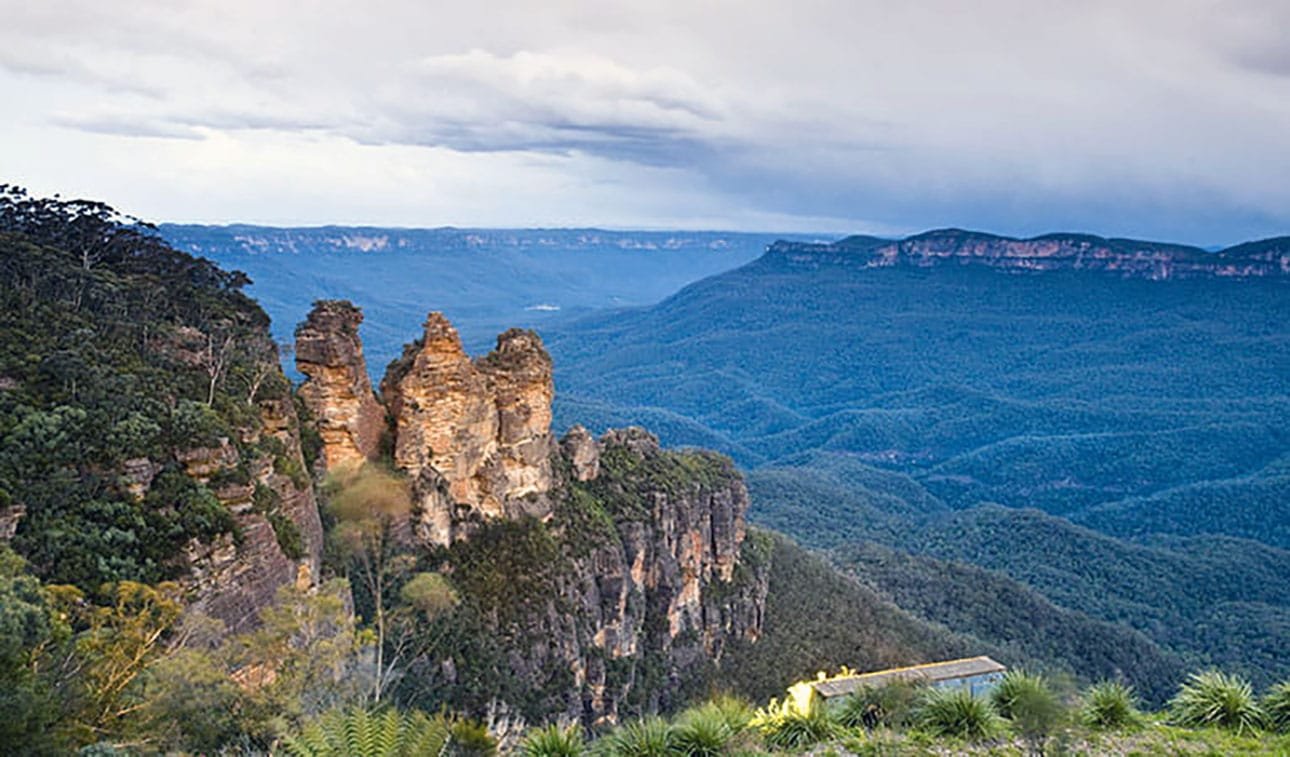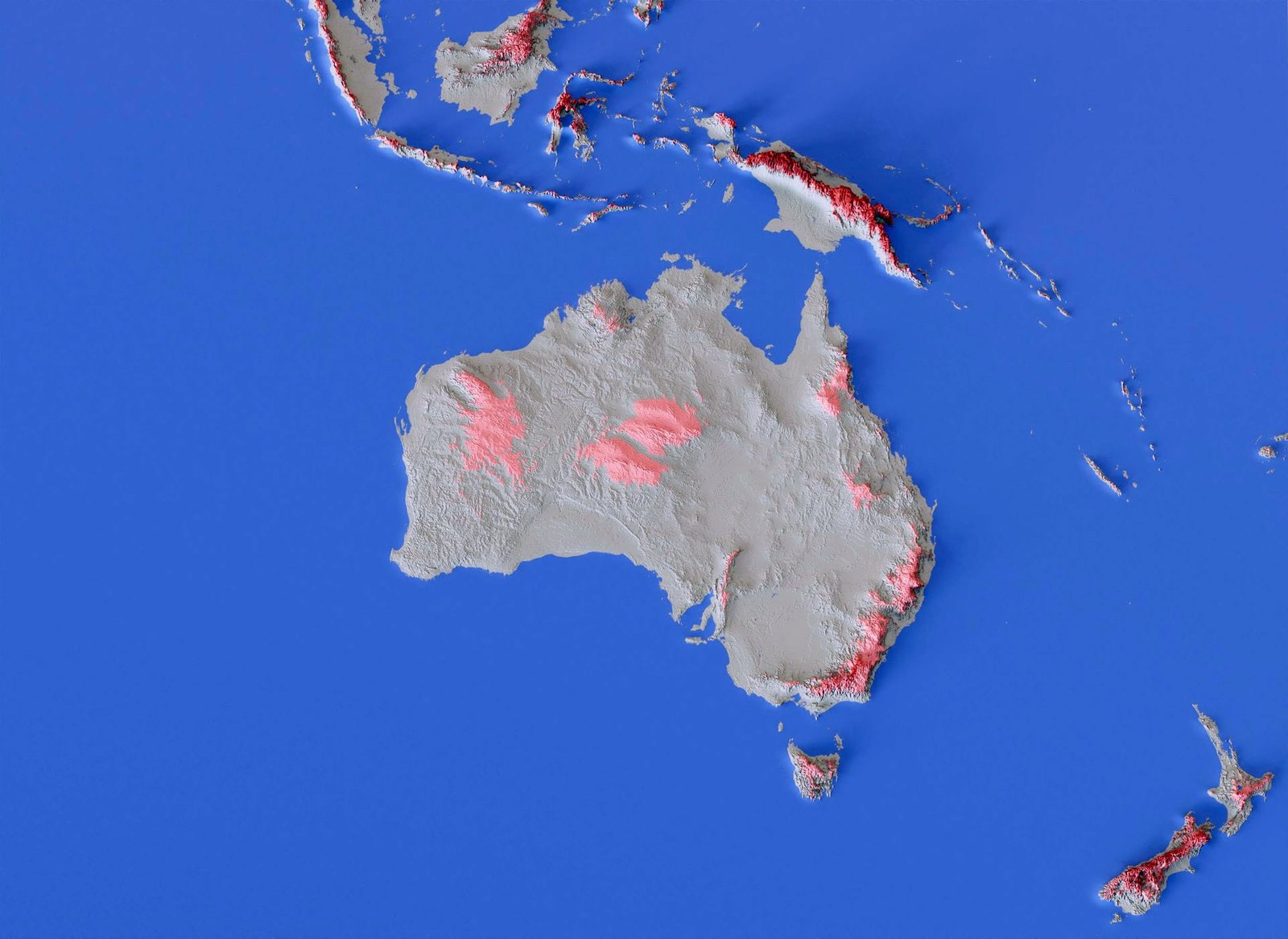Introduction to Australia and Oceania
Australia and Oceania comprise a diverse and captivating region, well-known for its breathtaking landscapes, rich cultural heritage, and vibrant ecosystems. Geographically, Australia is the sixth-largest country in the world, characterized by its vast outback, stunning coastline, and unique wildlife, including kangaroos, koalas, and the famous Great Barrier Reef. The surrounding Oceania region encompasses numerous islands and archipelagos, which host a rich tapestry of cultures and traditions influenced by centuries of indigenous history and exploration.
The cultural diversity of Australia and Oceania is one of its most appealing features. With a blend of Aboriginal, Torres Strait Islander, and various immigrant cultures, this region offers travelers a unique opportunity to explore different lifestyles, languages, and cuisines. From the ancient traditions of the native peoples in Australia to the vibrant customs of Polynesian islanders, the variety of experiences available attracts visitors seeking both adventure and enlightenment.
In recent years, the tourism landscape in Australia and Oceania has experienced notable growth. According to the latest statistics, international visitor arrivals to Australia reached 9.3 million in 2019, indicating a robust surge in interest among global tourists. Factors contributing to this trend include the region’s natural beauty, adventure activities such as snorkeling, surfing, and hiking, along with the appeal of experiencing multicultural festivals and events. Additionally, Australia and Oceania are increasingly recognized for their commitment to sustainable tourism practices, ensuring that the breathtaking natural environments remain protected while still offering memorable experiences for future generations.
Overall, Australia and Oceania stand out as prime destinations for travelers. Their unique geographical features, combined with cultural richness and emerging tourism trends, make them an exceptional choice for exploration and adventure.
Top Attractions in Australia
Australia is renowned for its diverse natural landscapes and urban marvels, making it a top destination for travelers. One of the most iconic sites is the Great Barrier Reef, stretching over 2,300 kilometers along the coast of Queensland. It contains the world’s largest collection of coral reefs, with 400 types of coral, 1,500 species of fish and 4,000 types of mollusc.
This UNESCO World Heritage Site is the largest coral reef system in the world and an unparalleled underwater paradise. Visitors can engage in various activities such as snorkeling, scuba diving, and boat tours to witness the vibrant marine life and stunning coral formations, making it an essential experience for nature enthusiasts.

The Sydney Opera House, with its distinctive sail-like design, is another must-visit attraction. Located on the Sydney Harbour, this architectural masterpiece is not only a venue for opera and theater but also offers a unique opportunity for guided tours that delve into its fascinating history and construction. The picturesque location of the Opera House provides visitors with breathtaking views of the harbor, especially during sunset when the city skyline is illuminated.

Located in the heart of Australia, Uluru (formerly known as Ayers Rock) is a sacred monolith that rises dramatically from the surrounding desert landscape. This significant cultural site for Indigenous Australians offers mesmerizing sunrises and sunsets that paint the rock in shades of red, orange, and purple. Visitors can partake in guided walks and cultural experiences to understand the profound spiritual significance of Uluru and the stories woven into its existence.
Other noteworthy attractions include the breathtaking landscapes of Blue Mountains National Park, home of the famous Three Sisters in Katoomba. You can discover iconic lookouts and waterfalls, historic walking tracks, mountain biking, Aboriginal culture, adventure sports, camping, the stunning beaches of Bondi and Byron Bay, and the vibrant culture witnessed in cities like Melbourne and Brisbane. Exploring these destinations enriches the understanding of Australia’s beauty and cultural heritage. By venturing beyond the well-trodden paths, one can uncover hidden gems such as the picturesque towns of Hobart and Margaret River.

Must-See Destinations in Oceania
Oceania is a region renowned for its stunning landscapes and rich cultural diversity, making it a captivating destination for travelers. One of the standout locations in this area is New Zealand, which boasts breathtaking natural beauty and a wide array of adventure activities. Visitors to New Zealand can explore the majestic fjords of Milford Sound, hike the scenic trails of Tongariro National Park, or experience the unique Maori culture through traditional performances and local cuisine. The diverse geography ranges from lush forests to dramatic mountain ranges, ensuring that outdoor enthusiasts will find ample opportunities for exploration.
Fiji, another gem in Oceania, is famous for its pristine beaches and vibrant marine life. It offers a perfect setting for relaxation and adventure alike. Snorkelers and divers will appreciate the abundant coral reefs that teem with colorful fish, while those seeking tranquility can unwind on the soft sands of the Mamanuca Islands. The Fijian culture is welcoming, and travelers can engage in traditional ceremonies or enjoy the festive atmosphere at local markets, providing a deeper understanding of this island nation’s heritage.
Additionally, Papua New Guinea presents a unique blend of rugged terrain and rich traditions. Known for its breathtaking landscapes, from mountains and rainforests to idyllic coastlines, it’s a paradise for trekkers and nature lovers. The Kokoda Track is a challenging hike that offers stunning views and a glimpse into the significant historical events of World War II. Moreover, the country is home to numerous indigenous tribes, each with distinct customs and languages, offering visitors a rare opportunity to immerse themselves in their vibrant cultures.
These must-see destinations in Oceania showcase the remarkable diversity of natural wonders and cultural experiences that await travelers. Each location invites exploration and promises adventures that leave lasting memories.
Traveling to Australia and Oceania
Australia and Oceania comprise a vast region filled with diverse landscapes and vibrant cultures, attracting millions of tourists each year. To effectively explore popular tourist spots, understanding the transportation options, entry requirements, and travel routes is essential. The major international airports in Australia include Sydney Kingsford Smith Airport, Melbourne Airport, and Brisbane Airport, which serve as primary gateways for travelers. Similarly, in Oceania, Auckland Airport in New Zealand stands out as the main entry point for visitors. Arriving at these airports provides easy access to local attractions via domestic flights or ground transportation.
For those planning to visit multiple countries within Oceania, it’s important to be aware of seaports that facilitate ferry services. For example, ferries operate between Australia and nearby islands such as Tasmania and New Zealand, allowing for a scenic and enjoyable travel experience. Visitors should note that while there are few overland border crossings in this region, travel to the Australian mainland from nearby islands may require specific transport arrangements.
Before embarking on a journey, travelers must ensure they meet visa requirements applicable to their nationality. Most travelers will need to apply for an Electronic Travel Authority (ETA) or a visitor visa to enter Australia, while New Zealand offers visa waivers for several countries. Tourists should verify their eligibility ahead of time to avoid any unexpected delays.
Once in Australia and Oceania, various modes of transportation such as domestic flights, buses, trains, and car rentals make it easy to navigate between popular tourist spots. Utilizing public transit options can be a cost-effective way to explore urban areas and scenic landscapes. By planning ahead and considering transportation logistics, travelers can enhance their experience in this stunning region filled with unforgettable adventures.
Ticket Prices and Budgeting Tips
When planning a visit to popular tourist spots in Australia and Oceania, understanding ticket prices is essential for budgeting effectively. The cost of entry to various attractions can vary significantly, so it is wise to research ahead of time. For instance, iconic sites such as the Sydney Opera House and the Great Barrier Reef can charge anywhere from AUD 40 to AUD 200, depending on the type of experience selected, such as guided tours or recreational activities. It is advisable for travelers to check official websites for the most accurate pricing information and any seasonal variations that may apply.
For those traveling on a budget, there are various options to help manage expenses. Consider purchasing multi-attraction passes, which can offer considerable savings. For example, the iVenture Card provides access to multiple attractions across major cities, allowing tourists to save as much as 40% on combined entry fees. Additionally, many cities offer tourism passes that include public transportation options, further easing travel costs for visitors exploring urban destinations.
Finding discounts on ticket prices is also relatively straightforward. Websites such as Groupon and Viator regularly post promotional offers and special discounts on popular attractions. Signing up for newsletters of specific venues may also give users access to flash sales or exclusive deals. Furthermore, travelers can look at the timing of their visits; off-peak seasons may present reduced entry fees or special events that come with complimentary entries.
Lastly, balancing experiences with budget involves prioritizing what matters most to the individual traveler. Allocating a larger portion of the budget to must-see attractions while opting for free or low-cost alternatives enables visitors to make the most of their journey. Local parks, markets, and cultural festivals often provide unique insights into the region without straining finances. By adopting these strategies, exploring the awe-inspiring destinations of Australia and Oceania can be both fulfilling and financially manageable.
Transportation Options within Australia and Oceania
When planning a trip to Australia and Oceania, understanding the transportation options available is crucial for an efficient travel experience. Each destination offers a variety of modes of transport that cater to different preferences and budgets, allowing visitors to explore urban environments and remote regions effectively.
Public transit systems in major Australian cities such as Sydney, Melbourne, and Brisbane are well-developed and reliable. In these urban areas, buses, trams, and trains form an extensive network, making it convenient to navigate between attractions. The Opal Card in Sydney and myki card in Melbourne are examples of prepaid smart cards that streamline fare payments and provide access to multiple modes of public transport. Fares are typically calculated based on travel zones, with discounts available for off-peak travel, which can benefit budget-conscious travelers.
For those preferring flexibility, car rentals are a popular choice in both Australia and Oceania. Numerous rental companies operate in major cities and at airports, offering a range of vehicles to suit various travel needs. Driving provides the opportunity to explore scenic routes, such as the Great Ocean Road in Victoria or the picturesque landscapes of New Zealand’s South Island. It is essential to be aware of local driving regulations, including speed limits and road signage, to ensure a safe and smooth journey.
In certain cases, internal flights may be the most efficient option, particularly for traveling long distances or reaching remote destinations. Airlines such as Qantas and Virgin Australia provide numerous domestic routes, connecting major cities with regional areas like the Great Barrier Reef or Tasmania. When it comes to planning internal flights, it is advisable to book tickets in advance to secure the best fares and availability.
In conclusion, Australia and Oceania offer a diverse array of transportation options, ensuring that travelers can find the best methods to suit their itineraries. By utilizing public transport systems, car rentals, and internal flights, visitors can navigate these beautiful regions efficiently and enjoy an enriching travel experience.
The Best Time to Visit
Australia and Oceania offer diverse climates and seasonal variations that significantly influence the best times to visit these regions. The Australian continent experiences its seasons in opposite alignment to the Northern Hemisphere, with summer spanning December to February and winter from June to August. The best time to visit mainly depends on the desired experiences and activities a traveler wishes to pursue.
For beach enthusiasts and water sports lovers, the summer months are ideal for enjoying sunny beaches and vibrant marine life. Coastal areas such as Sydney and the Gold Coast attract tourists during this time, bustling with festivals and events that showcase local culture. Conversely, the months of June to August present an off-peak season, ideal for those seeking a quieter experience. Winter also brings the opportunity to engage in snow sports in regions like the Snowy Mountains and Tasmania.
In terms of the Pacific Islands, the dry season, generally from May to October, emerges as the most favorable time to explore destinations such as Fiji, Samoa, and Tahiti. This period provides pleasant weather, minimal rainfall, and optimal conditions for outdoor activities and festivals. Notably, the peak season occurs around school holidays, when travel rates may rise due to heightened demand.
It is essential for travelers to consider events and local festivals when planning their trips. Major events such as the Sydney Festival in January and Vivid Sydney, a spectacular light display, significantly influence visitor numbers. Understanding regional climates, traditional peak seasons, and specific festivals can greatly enrich a traveler’s experience, ensuring a memorable visit to Australia and Oceania.
Top Activities and Things to Do
Australia and Oceania offer an abundance of exciting activities for tourists, ensuring that every visitor can find something to engage their interests. From breathtaking natural landscapes to vibrant urban centers, these destinations provide a wide range of adventurous pursuits and cultural experiences. Scuba diving is a must-do for enthusiasts, with the Great Barrier Reef being a premier location for discovering diverse marine life. Guided dives allow visitors to explore stunning coral formations, and certified instructors cater to all skill levels, making it an accessible adventure for beginners and experienced divers alike.
Hiking is another popular activity, with numerous trails that showcase the stunning terrain of Australia and its neighboring islands. The Overland Track in Tasmania, for instance, offers an unforgettable experience for trekkers with its pristine wilderness and scenic views. For those looking for more leisurely activities, exploring local markets provides an immersion into regional cultures. Markets like Sydney’s Paddy’s Market feature local produce, artisan crafts, and a taste of traditional cuisine.
Cultural experiences abound, from visiting world-class museums, such as the Australian Museum in Sydney, to participating in local art workshops that highlight indigenous artwork. Guided tours often enhance the experience by offering insights into the rich history and traditions of the regions. Moreover, captivating shows, such as the Sydney Opera House performances, provide a unique evening entertainment option that showcases both local and international talent.
For a more interactive experience, adventure parks and wildlife sanctuaries can be found across Australia and Oceania, where visitors can engage with native animals in a responsible manner. Activities such as zip-lining and skydiving offer adrenaline-pumping excitement, ensuring a memorable itinerary. Embracing the diverse array of activities available will surely enrich the travel experience in this vibrant region.
Interesting Facts and Cultural Insights
Australia and Oceania, renowned for their stunning landscapes and rich biodiversity, also boast a wealth of cultural heritage and intriguing trivia that enhance their charm as tourist destinations. One striking aspect is the presence of Australia’s Indigenous cultures, which span over 65,000 years. The Aboriginal and Torres Strait Islander peoples possess unique traditions, languages, and art forms that reflect their deep connection to the land. Visitors have the opportunity to engage with these communities through cultural experiences that include storytelling, dance, and art workshops, providing a profound insight into their vibrant heritage.
In addition to cultural richness, Australia is home to an array of unique wildlife, much of which is found nowhere else on the planet. For instance, the iconic koala and kangaroo are not only symbolic of the nation but also pivotal to its biodiversity. Travelers may also be fascinated to learn about the Great Barrier Reef, the world’s largest coral reef system, which is not only a UNESCO World Heritage site but also houses thousands of marine species. This natural wonder highlights the significance of conservation efforts due to climate change, urging tourists to appreciate and protect such vulnerable ecosystems.
Moreover, Oceania hosts numerous island nations, each with its own distinctive traditions and practices. For example, the warmth and hospitality of the Polynesian cultures are well documented, often celebrated through traditional feasting and music. The vibrant cultural festivals in Samoa or Fiji provide visitors with the chance to experience the local way of life firsthand. Lesser-known trivia, such as the ancient stone structures of Easter Island, also captivates the imagination, revealing the architectural ingenuity of its inhabitants. By uncovering these interesting facts, travelers can deepen their appreciation for the unique identities that define each destination, making their journey through Australia and Oceania all the more rewarding.

